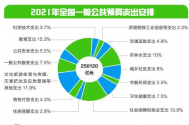China ratifies RCEP trade deal three months ahead of schedule, urges other members to follow suit
The 15-member Regional Comprehensive Economic Partnership (RCEP) was signed in mid-November
Commerce Minister Wang Wentao confirmed the deal had been ratified during the National People’s Congress (NPC) in Beijing
Cissy Zhou
Published: 2:58pm, 9 Mar, 2021
China has urged other members to ratify the Regional Comprehensive Economic Partnership (RCEP) agreement as soon as possible, after Beijing rubber stamped the deal around three months ahead of schedule.
The 15-member trade deal was signed in mid-November, and China is already accelerating the technical preparations to implement the treaty and ensure processes around tariff reductions and certificates of origin for trade goods are “quite smooth”.
“The sooner the agreement enters into force, the sooner the people of the member countries will benefit,” Commerce Minister Wang Wentao said on Monday after the deal was ratified during the National People’s Congress (NPC) in Beijing.
RCEP is the world’s largest free trade agreement, and includes the 10 members of the Association of Southeast Asian Nations (Asean), plus China, Japan, South Korea, Australia and New Zealand.
The trade pact will allow China to enhance its sphere of influence in Southeast Asia, with the region becoming increasingly important in global trade amid ongoing US-China trade tensions.
The RCEP agreement will enter into force 60 days after six Asean member states and three non-Asean member states have ratified the deal.
He Ping, a professor of international politics at Fudan University, said the accelerated ratification by the Chinese government is a move to motivate other countries to accelerate their procedures.
Australia’s ratification process is expected to be particularly tough as Canberra remains embroiled in a lengthy trade dispute with China,
while Singapore officials said in November that the deal would be ratified “very soon, in the next few months”.
He at Fudan University believes that the implementation threshold will be met soon.
“The Japanese parliament is also working on the ratification, and there should be no problem. We estimate there would not be problems with ratification from some other Asean countries,” He said, adding that if the threshold is passed, the pact will enter into force by the end of 2021 or early 2022.
RCEP, though, is less open and comprehensive than the 11-member Comprehensive and Progressive Agreement for Trans-Pacific Partnership (CPTPP),
which involves some of the same countries.
China has renewed interest in the pact – which is made up of Australia, Brunei, Canada, Chile, Japan, Malaysia, Mexico, New Zealand, Peru, Singapore and Vietnam – after it signed the RCEP deal in November.
“We will continue to uphold the multilateral trading regime. We will work for the early entry into force and implementation of the Regional Comprehensive Economic Partnership Agreement and the signing of the China-EU Comprehensive Agreement on Investment,”
said Premier Li Keqiang
as he delivered China’s annual government work report at the NPC on Friday in Beijing.
“We will accelerate China’s free trade negotiations with Japan and the Republic of Korea. China will actively consider joining the Comprehensive and Progressive Agreement for Trans-Pacific Partnership.”
Originally known as the Trans-Pacific Partnership, it was negotiated under the Obama administration and subject to intense domestic debate in the run up to the 2016 US presidential election, before Donald Trump withdrew in January 2017.
It was subsequently tweaked and signed by 11 members, coming into effect at the end of 2018.


